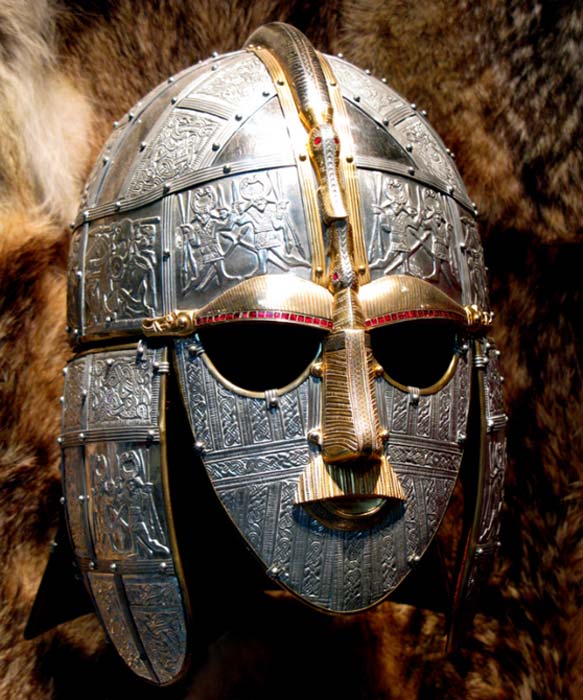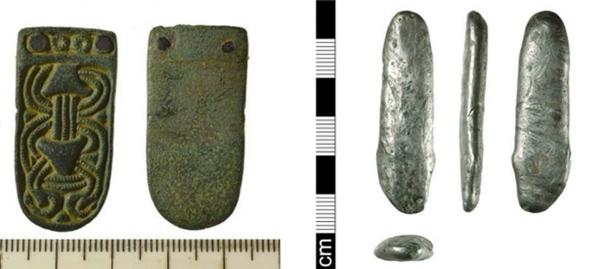
Rendlesham Royal Palace Linked to Famous Sutton Hoo Burial Site
In 2016 archaeologists unearthed an Anglo-Saxon royal palace and settlement at Rendlesham, located only 6 km (four miles) away from the famous Sutton Hoo burial site in Suffolk, England. Continued work over the years has unearthed a series of fascinating finds, revealing more about the East Anglian kingdom and a probable link between the palace and the well-known grave site.
Professor Christopher Scull, an Honorary Visiting Professor at University College London and University of Cardiff and the academic leader of the project called Rendlesham Revealed: Anglo-Saxon Life in South-East Suffolk, said that “Setting Rendlesham and Sutton Hoo in their wider landscape promises new understandings of the early East Anglian kingdom, its people and its rulers, and the wider English and North Sea worlds of which they were a part.” That community archaeology project was set to run from 2020-2024 and has included the investigation of lesser known sites in the Deben valley, with the hopes of providing more context for the major discoveries at Sutton Hoo and Rendlesham.

Top: An incomplete copper-alloy Early Medieval (Anglo-Saxon) mount, dating to 450-700 AD. (Suffolk County Council/CC BY 2.0) Bottom: An Early-Medieval (Anglo-Saxon) silver sceat (proto-penny), dating to 680-710 AD. (Suffolk County Council/CC BY 2.0) Both of the artifacts were found at Rendlesham.
The Royal Palace at Rendlesham and its Link to Sutton Hoo
The Suffolk Heritage Explorer website providing in-depth coverage of the excavations at the Rendlesham royal settlement reports that “After 12 years of archaeological investigation, we have identified the site of the early East Anglian royal settlement at Rendlesham, first mentioned in the 7th century by Bede in his Ecclesiastical History of the English People.” Bede wrote, “Swithelm, the son of Seaxbald, was successor to Sigeberht. He was baptized by Cedd in East Anglia, in the royal village called Rendlesham, that is, the residence of Rendil. King Aethelwold of East Anglia, the brother of King Anna, the previous king of the East Angles, was his sponsor.”
- The Strange Death and Afterlife of King Edmund Part 1: The Unfortunate Friendship With Ragnor Lodbrok that Led to Edmund’s Beheading
- The Magnificent Treasures of Sutton Hoo, The Final Resting Place of Anglo-Saxon Royals
- Netflix Film Tells Dramatic Story of Sutton Hoo Treasure Discovery
Rendlesham is located close to the Sutton Hoo burial site, known for its undisturbed ship burial, magnificent Anglo-Saxon helmet, and the hoard of ornate artifacts of outstanding historical and archaeological significance. It is one of the most famous discoveries ever made in Britain and has recently been brought back to popular attention following the release of the film ‘The Dig’ on Netflix. Sutton Hoo is the speculated burial site of a king who resided at Rendlesham.

Replica of Anglo-Saxon mask discovered at Sutton Hoo. (Bill Tyne/CC BY-SA 2.0)
In 2016, the Rendlesham project coordinator, Faye Minter, reported that her team discovered the remains of a 23m (75ft) by 9m (30ft) structure, which could have once been a royal hall or palace. She concluded that it was possible that there are other royal burials similar to Sutton Hoo, which was excavated for the first time in 1939 and dated back to the 7th century. It consists of about 20 burial mounds and the excavations revealed many fascinating and impressive treasures. The researchers hope to find even more burials, which could have been placed along the River Deben.

This LIDAR survey shows the core Anglo-Saxon areas at Rendlesham, including the main residence area. (Suffolk Archaeological Service/Colchester + Ipswich Museums)
“We have discovered what we think is a large Anglo Saxon Hall, which could be the palace itself, if you could call it that,” said Faye Minter [via BBC]. “We're convinced we've found a royal settlement of very high status, and I suppose it would be a large hall rather than a palace as it would spring to mind to us.”
As the researchers announced during the conference in Bury St Edmunds in 2016, the remains of the palace cover a 120-acre (50 ha) site and were discovered through the analysis of the aerial photography and geophysical surveys.
More than 4,000 items, including intricate metalwork, coins and weights, have been found at Rendlesham to date. However, only about 1,000 of them are Anglo-Saxon. According to Dr. Helen Geake of the British Museum, the discovery of the palace was an “incredibly exciting” moment.

Finds of high quality jewelry indicate that Rendlesham was probably a royal residence. (Rendlesham Rediscovered)
More Hidden Archaeology in the Region
The researchers suppose that there may be a few more palaces or halls like the one at Rendlesham or burials dotting the surrounding area, which is why excavations have continued around the region. The king would have toured his kingdom in order to show his power, magnificence, and charisma, therefore, it seems logical to have lots of palaces for him to base himself around the area which belonged to him. Finds made during the excavations can also provide more context for the Rendlesham palace and Sutton Hoo in the early medieval communities and the local landscape to which they belonged.
In 2018, excavations provided archaeologists with the discovery of treasure in the form of Roman coins, gold jewelry fragments, and a solid silver ingot dating to either the Viking or Anglo-Saxon period. Those artifacts were found near Woodbridge. Minter told BBC News that the finds “add to the picture of what we have got for that high status 7th Century site [Rendlesham].”

Anglo-Saxon strap end with Borre style decoration and silver ingot providing evidence of metalworking at Rendlesham. (Suffolk County Council Archaeology Service/Colchester + Ipswich Museums)
Top Image: Sutton Hoo burial mound (Public Domain). Insert: A gold and garnet bead discovered at the Rendlesham royal settlement. (Rendlesham Rediscovered)
Updated on February 4, 2021.















